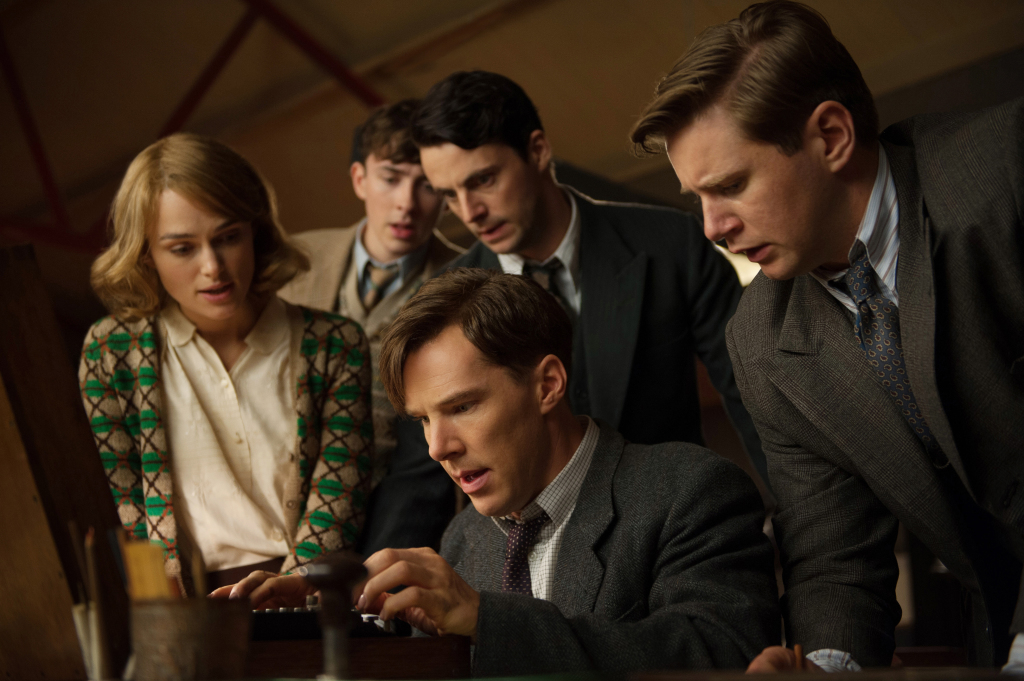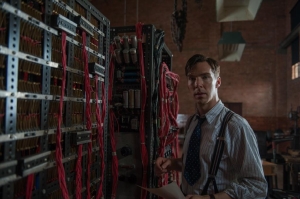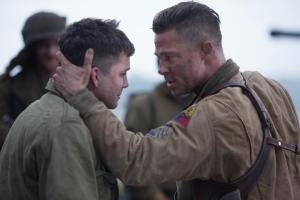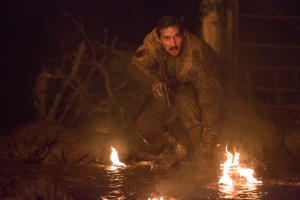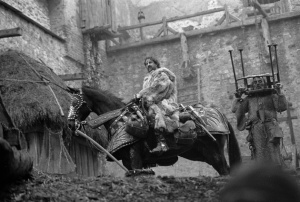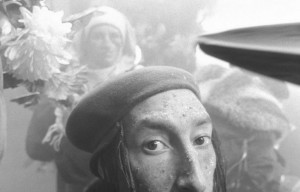By Cleaver Patterson.
Since its inception the BFI London Film Festival has – like the city which hosts it – prided itself in its ability to combine quirkiness with broad appeal. The result has always been an original and eclectic mix of films as seen in those shown in this its 58th year. The event – which ran between the 8th and 19th of October, showcasing an array of films which have rolled during the closing months of 2014 and will continue into early 2015 – celebrated the ability of the medium to capture events, real and imaginary, in our world and beyond, in all their rawness as well beauty, to striking and memorable effect.
Great film can move you to tears. Take, for instance, Norwegian director Morten Tyldum’s biographical thriller The Imitation Game, which is unlikely to leave a dry eye in the house. Based on the true story of mathematician Alan Turing – whose work at the government’s codebreaking centre Bletchley Park, helped turn around Britain’s fortunes during World War II – this stunning cinematic experience reminds you why film remains one of our most evocative art forms.
Alan Turing (Benedict Cumberbatch) and his colleagues, including his future fiancé Joan Clarke (Keira Knightley), were employed during World War II to assist the British government to decipher military codes sent daily by Germany to their troops on the front line. The intrigue surrounding Bletchley Park, where they carried out their work, was only half the story, with the personal persecution and trials Turing underwent because of his homosexuality, being as bad as any perpetrated in the name of the war.
Like the codes Turing and his colleagues spent long months deciphering during the turbulent years of the Second World War, The Imitation Game tells a multifaceted story, of which the work done at Bletchley Park, played only a small part. Here is a story in two parts, its screenplay by American writer Graham Moore, based on author Andrew Hodges’ book “Alan Turing: The Enigma”. As a war time thriller and account of one of history’s most important yet secretive inventions, it totally envelopes the viewer. The proceedings excite and stir as well as any full-on adventure film through Tyldum’s believable period recreation – filmed as far as possible in real locations – interspersed with archive footage, as opposed to dramatised action of which there is surprisingly little. The acidly witty dialogue treats Turing’s sexuality and relationships – including an early infatuation with a boarding school classmate and later engagement to fellow cryptographer Joan Clarke – with a sensitivity frequently missing from dramas dealing with homosexuality. The film has been criticised in some circles due to its ‘glossing over’ some more sordid aspects: namely, Turing’s persecution during the 1950s for incidents of gross indecency, in a time when homosexuality was still seen as a crime leading to persecution and imprisonment. However, the film’s avoidance of graphically depicting such incidents fits with its overall approach, stopping any trivialisation of such a sensitive subject.
It is good to see that major productions can still see beyond the hype, and cast a film from the heart. One can only imagine the result had Leonardo Dicaprio played Turing, a possibility which was mooted during the early stages of production. Instead, casting English stars Cumberbatch and Knightley in the leads – with strong support from such names as Matthew Goode, Charles Dance and Rory Kinnear – gives the film added strength. As the inwardly tormented mathematical genius – struggling with personal as well as ethical issues – Cumberbatch’s portrayal of Turing is heartfelt and beautiful and well worthy of the praise it has garnered.
Before his posthumous pardon in 2013 by Her Majesty Queen Elizabeth II, Turing was still disparaged as much for his sexuality as he was praised for the immeasurable work he did, saving millions of lives during World War II. This inspiring and emotive film which tells his story, should go some way to help the continued rehabilitation of his memory in the annals of world history.
Anger and rage dominate writer-director David Ayer’s World War II drama Fury, driving the men at its centre to heroic acts both brave and foolhardy. The passions which push these characters to carry out the often harrowing deeds which they find themselves involved in feel almost palpable, making this one of the most shocking films to have emerged in recent years.
Conscripted to join tank commander Don ‘Wardaddy’ Collier (Brad Pitt) and his group of men in their tank on the German frontline during the final days of World War II, young recruit Norman Ellison (Logan Lerman) feels far from capable of dealing with the horrors of the battlefield. But in a world where your life, and that of your comrades, can depend on your next move, you grow up fast, as Ellison learns in a truly traumatic fashion.
It’s a testament to Ayer’s skill as a director that you forget the stature of the actors taking part in Fury, seeing them only as battle hardened soldiers and not Brad Pitt or any of the others in the main roles. The core group spent months together before filming, preparing for their parts – and it shows. The life of tank soldiers on the front line during World War II (or indeed any war) was confined mainly to the interior of little more than a metal box on tracks. Ayer and his design team not only painstakingly recreated the authentic interiors, but were also the first filmmakers to use a real Tiger tank in a modern production. This attention to detail shows, giving the viewer a tangible sense of the inhuman conditions the soldiers endured. Throughout the film, particularly during the climatic battle sequence, the viewer feels every shell, bomb and grenade explode around the tank, as well as the dirt, filth and blood the soldiers were immersed in inside. Not a film for the squeamish, Ayer spares no expense recreating his nightmare vision of the hell the men on the frontline endured in the name of freedom against Hitler’s fanatics.
Even more though is the feeling of isolation, which is the film’s most prominent and lasting sensation. Early in proceedings Collier warns the fragile and emotional Ellison to be wary of becoming close to anyone, and to remain ‘removed’ from those around him. It becomes obvious as the story unfolds why the older and more experienced soldier is so ‘hard’ on the raw recruit. To survive the carnage of war unscathed you must remain detached otherwise, as Ellison learns to his cost, what is seen as vulnerability and emotional weakness can jeopardise not just your life, but also that of those depending on you. Pitt and Lerman capture marvellously the steely toughness which must run at the core of every true soldier, in order for them to deal with the horrors of war they face, as well as the humanity and compassion which makes them willing to lay down their lives for their fellow human beings.
Many people, like Collier and his rough neck tank companions, become soldiers for the sense of ‘family’ they garner from the experience. Despite the obvious dangers of being close to their comrades-in-arms, they do so because it’s this basic human need which is worth fighting for, and which makes Ayer’s Fury such an emotionally raw experience.
Films from Eastern Europe are not always the easiest to comprehend for various reasons. Lengthy running times, grim subject matter and the obstacle of dialogue and meaning being lost in translation result in movies which may not always be the first choice amongst western audiences fed on a diet of Hollywood blockbusters and lighter European fare. With this in mind, director Aleksey German’s Russian Sci-Fi epic Hard to Be a God (Trudno byt bogom), is subject to many of these pre-conceived notions.
Researchers from Earth are sent to the planet Arkanar, which is living in a period equivalent to our Middle Ages. Shocked by what he sees, and the primeval approach Arkanar’s inhabitants have to life, chief researcher Don Rumata (Leonid Yarmolnik) – who is feared and treated as a god in this alien world – cannot help but go against the rules, intervening in affairs better left alone.
As with many films aiming to convey ‘deeper’ messages, some of Hard to Be a God‘s subtler nuances may be lost on all but the most dedicated cinephile. This said, German’s screen vision – on which he worked for thirteen years, but died before its completion – is aesthetically mesmerising, though not necessarily consisting of the most appetising of ingredients. Watching this film, it is easy to understand why German was not the most prolific director; debuting with the dramatic Sedmoy Sputnik (1967), based on the novel by Boris Lavrenev, he only helmed six films in total. However, considering the detail in Hard to Be a God, which turned out to be his last film, it’s perhaps more surprising German completed as many as he did. Filmed on location in the Czech Republic, as well as Moscow, the viewer feels the mud and dirt clinging to every building, animal and person which looms from the screen in unflinching close-up. The film was shot in black and white, which may seem incongruous to today’s audiences fed on a diet of digital and pin-sharp Blu-Ray brightness. Somehow, though, monochrome suits these proceedings, emphasising their bleakness better than colour ever could. Neither does the film gloss over the filth and violence which coloured the daily lives of people in the Middle Ages, lingering frequently on the minute detail of every bodily function and murder, which happen aplenty.
From the opening in the pestilence ridden setting on some faraway world, you know this is not going to be a pleasant experience. From history we have been told that life in the Middle Ages was hard for all, from the highest to the lowest in society. But here – in German’s vision of a planet so far behind our own developed civilisation that its inhabitants appear stuck in some form of medieval time-warp – we see it for real. The hordes of grotesqueries who shamble into view – from nobility, men of the cloth and soldiers, to street urchins and shaven headed whores – compliment and enrich the mud and fece strewn environment in which they eek out their pitiful existences. Here is a world lashed by perpetual rainstorms and plagued with physical hardships, where death in everyday life on the street is preferable to that at the hands of the ruthless ruling classes and their bizarre devices for reprimanding law breakers in this strange, barbaric land.
The cast – led by prolific Russian star Leonid Yarmolnik in the lead role of Don Rumata – immerse themselves totally in their parts with no apparent fear of suffering for real the physical harm or damages inflicted upon their characters. None of them are likely to elicit sympathy from the viewer, each equally debased in their own way. The film however does evoke deep feelings, even if only of revulsion for the characters and their way of life.
Hard to Be a God is a far from pleasant; watching the three hour epic is akin to an endurance test. However those who see it through to the end, will be rewarded by a sense, not just of achievement, but also that they have just experienced a genuine cinematic event as opposed to yet more forgettable film fodder.
The Texas Chain Saw Massacre (1974) is quite simply one of the most disturbing films, period. Even today, in an age of torture porn and seen-it-all cgi gore, this legendary slice of terror still has the power to shock. Renowned for its relentless brutality, when you analyse the original film there is actually very little visceral violence depicted. Everyone who has watched the film – and which true horror aficionado hasn’t? – believes they’ve seen more than they have. But inference is the magic ingredient of director Tobe Hooper’s horror masterpiece. In The Texas Chain Saw Massacre, Hooper – who later delighted viewers with Death Trap (1977) and the classics Salem’s Lot (1979) and Poltergeist (1982) – builds tension through the horrors happening off screen, leaving viewers to fill the gaps with their own imagination, which is always a more effective option.
Sally (Marilyn Burns) and her invalid brother Franklin (Paul A. Partain) are on a Texan road trip with some friends, to visit their family’s old homestead. Running low on gas by the time they reach their destination, two of the group head to a neighbouring farmhouse to borrow some fuel. What they find instead is horror beyond their wildest dreams, plunging the group of innocent young people into a nightmare from which there is no escape.
Beyond the controversy and hype which has dogged The Texas Chain Saw Massacre since its first release, it is actually some of the film’s less obvious scenes which are most chilling – particularly those involving the canabalistic family’s home. Take the first sight the audience has of the ramshackle house. On the face of it this scene appears tame compared with what comes later, the building’s deceptive tranquility being its beauty. In all its picket fenced glory the house – standing in relief against a blue sky with no more than a few wisps of white cloud for emphasis – epitomises the American ideal of a gabled, whitewashed farmhouse. However, that behind this tranquil facade hides a house of indescribable carnage simply makes it worse once the horror kicks in.
This is, in fact, a good summation of the film as a whole. From its outset – if you skip the lurid, tabloid’esque pre-credit intro, with its sensational re-imagining of the story of real-life Texas grave robber Ed Gein who inspired the film’s monstrous central figure of the chain saw wielding Leatherface (played with undiluted glee by Icelandic actor Gunnar Hansen) – the viewer is lulled into a false sense of security, from which they are soon rudely awoken. What happens to the kids could be seen as retribution their sexed up, doped out, louche lifestyle. However, as this was typical behaviour amongst many young Americans during the late 1960s and early 70s, did it really make them deserving of what followed?
Despite several remake abominations in the proceeding years, including a recent 3D make-over, Hooper’s original has never been bettered. Up close and personal on the big screen is still the best – and most harrowing – way to meet Leatherface and his depraved family. However, with a new remastered Blu-Ray edition of the original recently released to celebrate the film’s 40th anniversary, the film is about to be given a new lease of life with little doubt that its horrific legacy will live on for many years to come.
You can be sure before you even start watching some films that their subject matter will offend someone, somewhere. With this in mind you can’t help but feel writer-director Justin Simien knew just what he was doing when he hit upon the idea for his new comedy-drama Dear White People. It’s almost as though he decided that if he was going to annoy one group of American society, he may as well wind them all up the wrong way.
Samantha White (Tessa Thompson) is a black student at the predominantly white Ivy League Winchester University. Determined to fight what she sees as the racial intolerance still rife amongst the university’s elite, she uses her controversial student radio show “Dear White People” to promote her standpoint – with predictably disruptive (and comic) results.
Dear White People‘s gung-ho attitude to offensive attitudes – including everything from institutionalised racism to sexual prejudices and classism – is its strength. Without the central issue of colour intolerance which is still common throughout large swathes of America, this film would not exist. Here is a drama which lays bare the ways many think in private, but are often afraid to voice in public. From the attitudes of the upper-class white students at the elite Ivy League institution of Winchester University, to their black counterparts who inhabit Armstrong Parker House (the traditionally all black hall of residence) and are determined to stop the university’s ruling body from forcing the hall to diversify, the film cleverly plays two sides with opposing viewpoints against each-other, whilst remaining for the most part neutral. Add to this a mixed race relationship, a gay black boy ‘belittled’ by the gay white editor of the university rag on which he is desperate for a job, and the higher echelons of the university whose attitudes to everything are still stuck in the nineteenth century, and the result is relevant to a contemporary audience who still face such issues everyday. Yet, where in someone-else’s hands this could have appeared condescending, Simien leavens proceedings with just the right degree of humour, aimed at everyone resulting in no one party coming off lightly, and none being able to find offence over the rest.
The cast seem perfectly placed within the reserved environs of Winchester. Tessa Thompson and Kyle Gallner stand out in particular as Samantha and Kurt – son of the university’s head – the chief protagonists on opposing sides of the colour spectrum, bringing an edginess to the racial standoffs they frequently encounter. The verbal battles the various characters become embroiled in play out against the authentic setting of the University of Minnesota in Minneapolis, its rustic beauty accentuated by a soundtrack of snatched classical music, which merely emphasises the aloof surroundings of the exclusive American institution.
Dear White People works because no individual comes out smelling of roses. Black, white, gay, straight, male or female, everyone is depicted as prejudiced in some way. If we all took this message on board, it may help us become more tolerant of our fellow men.
Cleaver Patterson is a film critic and writer based in London. He regularly contributes to various websites including Film International and The People’s Movies whilst his writing has featured in such publications as Rue Morgue, Video Watchdog and Curzon Magazine.
The 58th BFI London Film Festival ran from the 8th to the 19th October, 2014.

